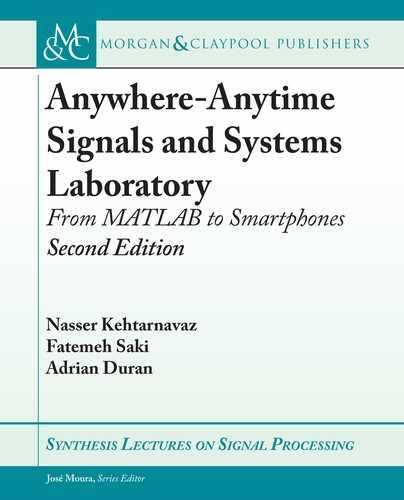Book Description
A typical undergraduate electrical engineering curriculum incorporates a signals and systems course. The widely used approach for the laboratory component of such courses involves the utilization of MATLAB to implement signals and systems concepts. This lecture series book presents a newly developed laboratory paradigm where MATLAB codes are made to run on smartphones, which most students already possess. This smartphone-based approach enables an anywhere-anytime platform for students to conduct signals and systems experiments. This book covers the laboratory experiments that are normally covered in signals and systems courses and discusses how to run MATLAB codes for these experiments on both Android and iOS smartphones, thus enabling a truly mobile laboratory environment for students to learn the implementation aspects of signals and systems concepts.
A zipped file of the codes discussed in the book can be acquired via the website.
Table of Contents
- Preface
- Introduction to MATLAB
- Software Development Tools
- From MATLAB Coder to Smartphone
- Linear Time-Invariant Systems and Convolution
- Convolution and Its Numerical Approximation
- Convolution Properties
- Convolution Experiments (1/5)
- Convolution Experiments (2/5)
- Convolution Experiments (3/5)
- Convolution Experiments (4/5)
- Convolution Experiments (5/5)
- Lab Exercises
- Running MATLAB Coder-Generated C Codes on Smartphones
- Real-Time Running on Smartphones
- Real-Time Labs
- References
- Fourier Series
- Continuous-Time Fourier Transform
- Digital Signals and Their Transforms
- Authors' Biographies
- Index
- Blank Page (1/3)
- Blank Page (2/3)
- Blank Page (3/3)
